8 Free DIY Bee House Plans You Can Build Today (With Pictures)
-
Kristin Hitchcock
- Last updated:

Whether you want to create the best garden or care about the declining bee population, you should make a bee house or hotel. Bee houses are a great way to shelter these amazing little creatures. Better yet, the bee houses aren’t difficult to make.
Below, you will find seven different bee house plans. These plans describe everything you need and need to do to make homey hotels for our favorite pollinators.
The Top 8 DIY Bee House Plans You Can Make Today
1. 2 pawsdesign Simple Recycled Bee Hotel
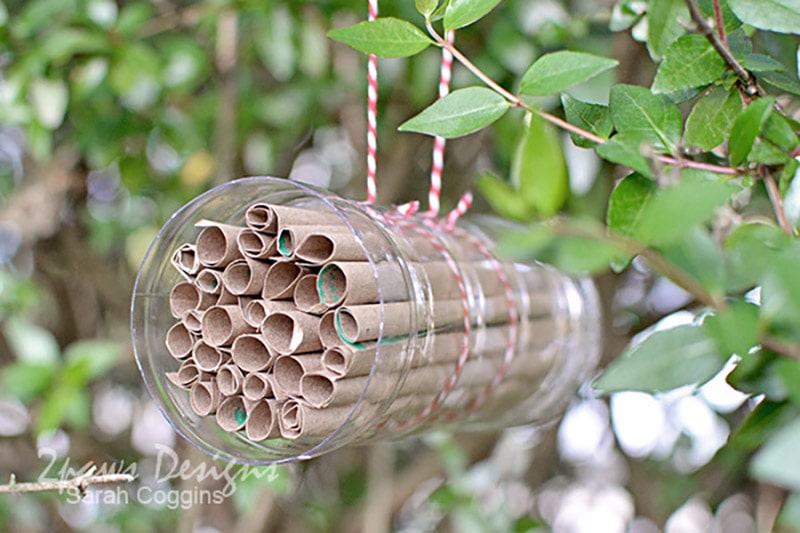
- Materials: Empty bottle, paper bags, string
- Tools: Ruler, pencil, scissors, utility knife
- Difficulty Level: Beginner
The 2pawsdesign Simple Recycled Bee Hotel offers a great plan for creating a bee hotel out of items you already have around your home. The idea behind this hotel is to use the items you normally would throw away to create a home for wonderful bees.
This DIY bee hotel is super easy and only requires items you probably have in your home. It is easy enough that children can make it too. Making this plan is awesome if you want a wholesome activity for the family.
The instructions are easy to follow and include step-by-step instructions and pictures for every step of the process.
2. Hoselink Bug Hotel
- Materials: Can, bamboo stakes, wire
- Tools: Pen/pencil, ruler, gloves, cutting tool
- Difficulty Level: Beginner
If you are a visual learner, you will like the Hoselink Bug Hotel. This bee hotel plan is very similar to the above-mentioned one. You get to utilize old trash to make a great house for our bee friends.
Just like the above plan, this bee hotel plan can be made by adults and children alike. Since you will be cutting into a can instead of a plastic bottle, make sure to supervise your children so that they don’t accidentally cut themselves in the process.
3. Baker Ross Solitary Bee Hotel
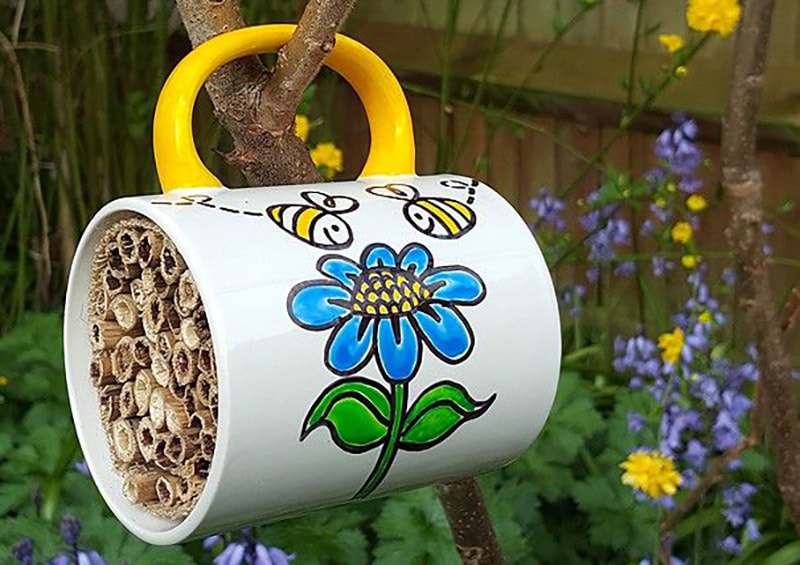
- Materials: Porcelain mug, hessian roll, short bamboo sticks, colored craft wire
- Tools: Pencil, deco paint pens, acrylic varnish, secateurs
- Difficulty Level: Beginner
The Baker Ross Solitary Bee Hotel is a great idea if you want to do more than just make a bee hotel. This plan is unique because it allows you to create a functional bee hotel, but you get to design the outside of the hotel so that you have an artistic craft that matches your aesthetics as well.
How it works is that you will create a design on the outside of your mug. You can do whatever you want on the outside since the appearance is for you alone. Once you decorate the mug, you use the inside of it to create a bee hotel.
The instructions for this DIY bee hotel are very thorough and easy to follow. The site even offers examples of what products you will need to make the hotel attractive, long-lasting, and functional.
4. My Green Misadventure DIY Mason Bee Homes
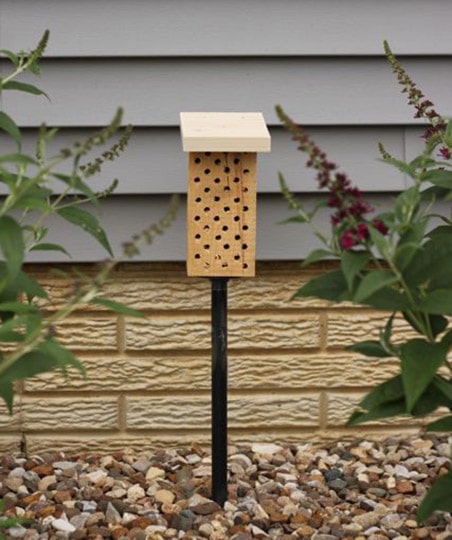
- Materials: Lumber
- Tools: Drill, nails, wood glue
- Difficulty Level: Intermediate
The My Green Misadventure DIY Mason Bee Homes are also very attractive. They look like regular birdhouses from a distance. However, you will quickly see upon a closer examination that this is a bee hotel, not a birdhouse.
Like the above plan, this one requires slightly more advanced tools and skills. You will have to drill holes into a block directly to get the finished product. With the right tools, this job should go by quickly and efficiently.
These plans aren’t quite as thorough as some of the others. You will have to freestyle the creation a bit, but that can make the process all the more fun.
5. Isoscella Wooden Bee Hotel
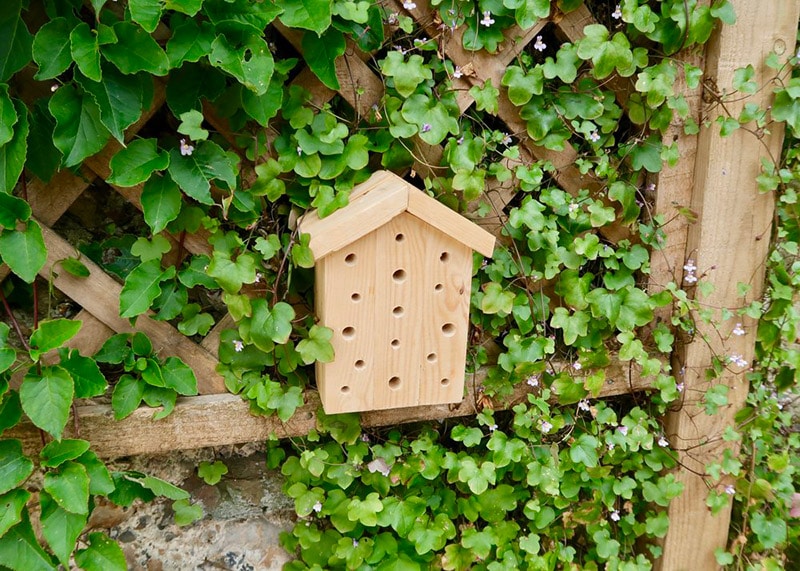
- Materials: Wood
- Tools: Wood saw, wood glue, power drill
- Difficulty Level: Intermediate
The Isoscella Wooden Bee Hotel looks a lot like the above one. It uses scrap lumber to create a simple yet aesthetically pleasing bee hotel. With the right tools, this bee hotel can take you mere minutes to construct.
The plans for this bee hotel are more thorough than the My Green Misadventure DIY Mason Bee Homes. If you love the look of that bee hotel but don’t feel comfortable freestyling its creation, this is the bee hotel plan for you.
6. Karin’s Nature Blog Bee Hotel
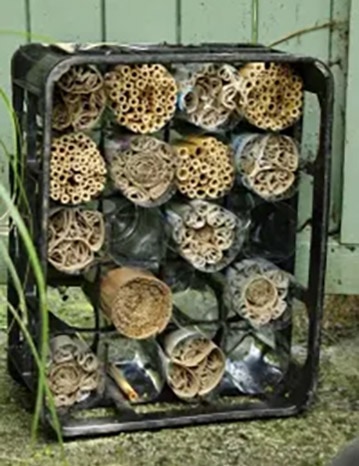
- Materials: Twigs, stems, cup, block
- Tools: Drill
- Difficulty Level: Intermediate
Karin’s Nature Blog Bee Hotel offers tons of bee hotel ideas. It has a roundup of some of the most attractive bee hotels. At the bottom, there is an infographic about making these bee hotels and how to care for them.
The fact that this blog also provides cleaning instructions is a major plus. Many individuals don’t realize that they need to maintain their bee hotel after making it. As a result, these instructions will help you create and care for your bee hotel.
The downside of this DIY bee hotel is that it doesn’t go into extensive detail about what you need to do, but the infographics are enough to understand the basics so that you can freestyle your bee hotel.
- Related Read: How to Make a Bee House with Bamboo in 3 Steps
7. Chicago Botanic Garden Bee House
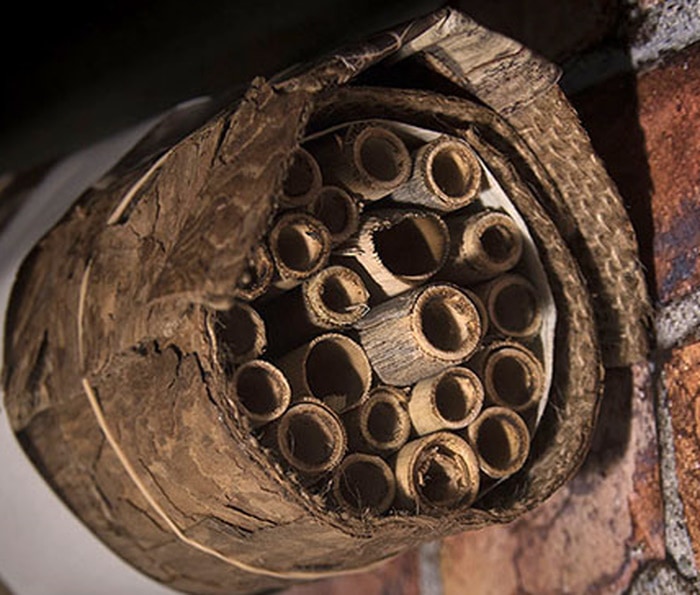
| Materials: | Metal can, reed tubes, bark ribbon, cling floral adhesive, duct tape |
| Tools: | Scissors, rubber band |
| Difficulty Level: | Easy |
The Chicago Botanic Garden also has a guide to creating a bee house. This plan is very simple with clear guidelines. For instance, they recommend drilling several differently-sized holes to promote diversity. They provide explanations of what holes to include depending on your area.
For the most part, this plan is very simple. You don’t even need any fancy tools, as you’re mostly utilizing reed tubes. You can make many of these houses very quickly. In fact, we consider them easy enough for even children to do.
8. Soda Bottle Bee House
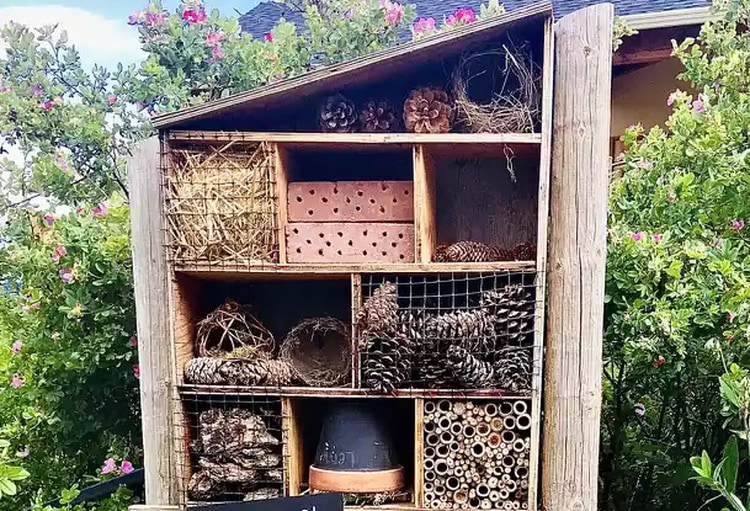
| Materials: | Soda bottle, bamboo, modeling clay |
| Tools: | Dowel, hand saw, utility knife, measuring tape, sandpaper |
| Difficulty Level: | Moderate |
This bee house is slightly more involved than others. However, it makes a very interesting bee house that takes best practices into account. You’ll need to cut a soda bottle to make the base of the house and wash it out thoroughly. You’ll need to do a bit of sanding and such, as well.
However, overall, this plan is pretty simple. The average DIYer should be able to complete it rather quickly. You’ll use bamboo and clay to make the inside of the soda bottle suitable for the bees.
Tips for Using a Bee Hotel
In addition to finding the best plan for your DIY bee hotel, there are some other tips to keep in mind. For example, you don’t want to make super large holes or leave your bee hotel all dirty. Here are the most important tips to keep in mind:
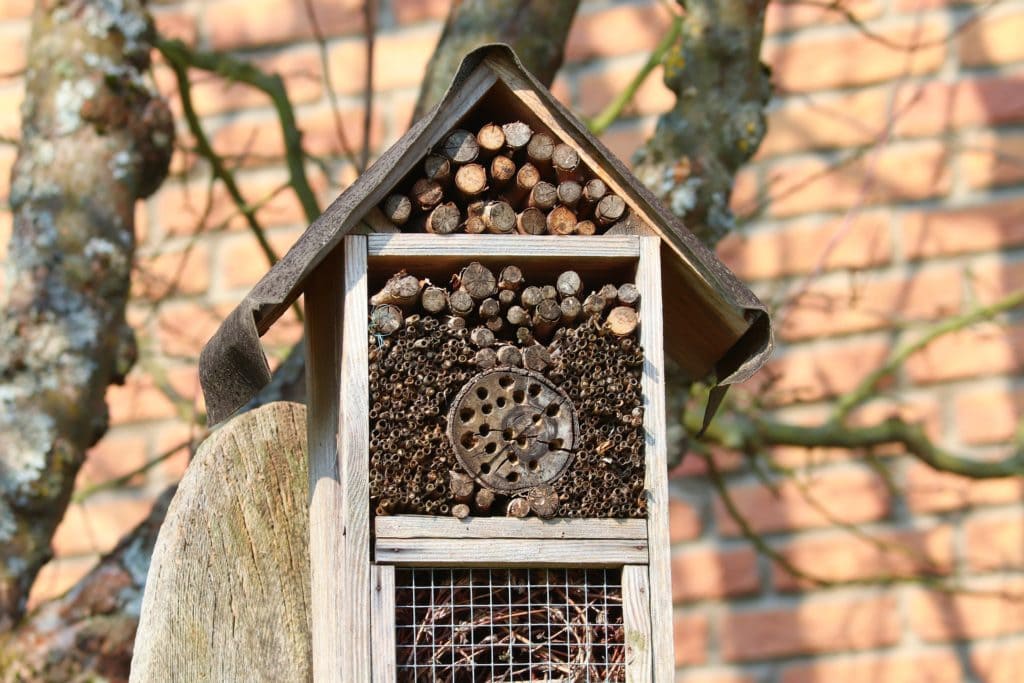
Don’t Make the Holes Too Large
Make your beehouse just the right size for the bees. You don’t want to make too large of holes, or else other insects and critters will get into the bug hotel. This may even attract predators of the bees, resulting in a death trap.
To create the perfect size, research what bees are in your area and their typical size. From there, drill holes that are just slightly larger than the bees so that they have proper housing without attracting other critters.
Place the Houses Strategically
Place bee houses strategically so that they are around other areas that bees frequent. It’s a great idea to place bee hotels in your pollinator garden right around the flowers. That way, the bees are more likely to see the bee hotel, in addition to your garden being pollinated more.
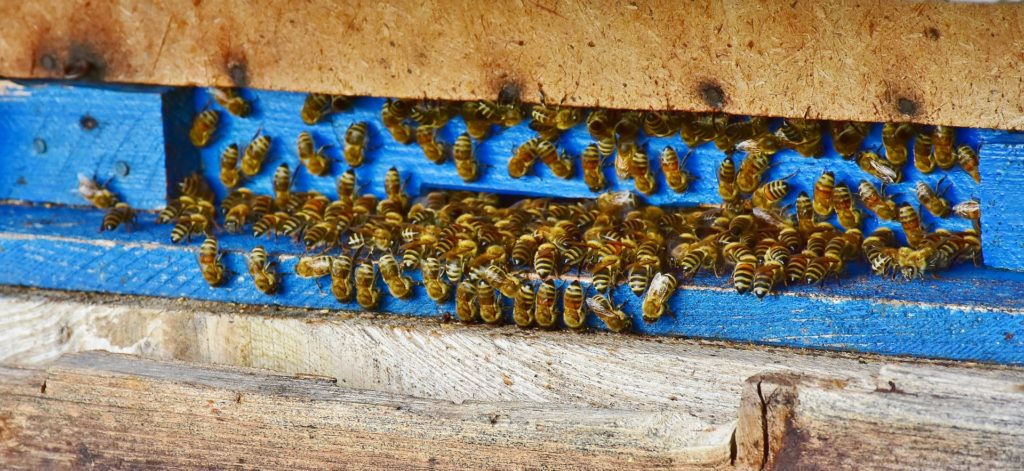
Clean Your Bee Hotel
Just like your house, bee houses need to be cleaned out. Dead larvae, dead bees, remaining cocoons, and pollen will all build up inside your bee hotel. It’s important to clean out the bee hotel frequently. If you let it build up and get gross, bugs and pests will be attracted to the area, which can cause the bees to die from disease.
 Conclusion
Conclusion
If you are worried about the death of our beloved bees, do something about it now. Creating a DIY bee house or hotel for your garden is one way to offer solitary bees in your area shelter. Any one of the plans above will help you make perfect houses for your bees.
Remember that your job is not over after you set up the house. Keep it clean and tidy to welcome new bees and protect them from pests and illness.
Featured Image Credit: PollyDot, Pixabay
Contents
